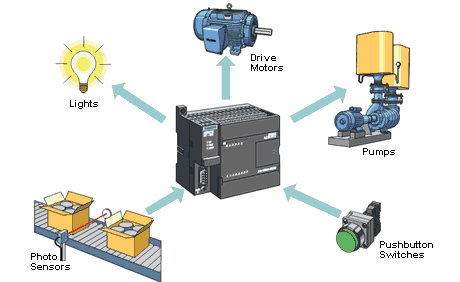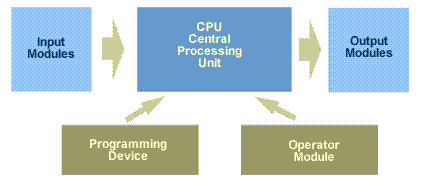Basic functions of PLC
In general, the function of PLC are as follows:
1. Control Sequential
PLC processing binary input signals into outputs that are used for the purposes of processing techniques sequentially (sequential), here the PLC to maintain that all the step / steps in a sequential process takes place in the proper sequence.
2. Plant Monitoring
PLC continuously monitors a system (e.g. temperature, pressure, level of altitude) and take necessary action in connection with a controlled process (for example, already exceeds the limit value) or displays a message to the operators.
look at this picture to be clear information -

Elements related to inputs in PLC, such as : Switches and Sensors.
Elements related to outputs in PLC, such as : Motors and Lights.
Basic PLC operation :
The primary parts of a PLC are the inputs modules, the CPU, and the outputs modules :

Input Modules
Input modules accept a variety of analog or digital signals from various sensors and convert them to logic signals that can be used by the CPU.
CPU Central Processing Unit
The CPU makes decisions and executes control instructions based on the program and its memory.
Output Modules
Output modules convert control instructions from the CPU into signals that can be used to control various field devices.
Programming Device
A programming device is used to install the instructions that determine what the PLC will do in response to specific inputs.
Operator Module
The operator interface allows process information to be displayed and new control parameters to be entered.